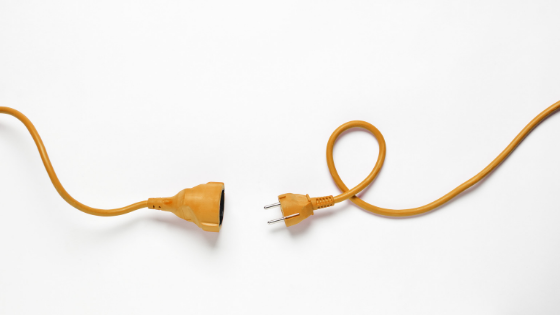Unless you have the incredible good fortune of always having an electrical outlet in exactly the right place, you’re going to need an extension cord.
Unfortunately, an extension cord introduces a whole new layer of risks to your workplace–especially if your employees are careless.
If you want to maintain a safe work environment, you need to make extension cord safety in the workplace a priority. Here’s what you need to know at each stage of an extension cord’s life cycle.
Buying Cords
First, you should know how to buy an extension cord.
Two factors influence a cord’s load capacity, or its ability to carry electrical current:
- Wire gauge
- Length
The gauge, or the diameter of the wire, affects how much current the wire can carry at any given time. It also affects how much the wire heats up when carrying current (too much heat from overload translates into a fire hazard).
The length is about more than your convenience–it affects the cord’s voltage drop, or how much voltage is lost due to resistance in the cord’s wires.
All extension cords are rated based on their gauge (identified by their American Wire Gauge number, or AWG) and their length.
They range from light-duty cords, which should never be used for anything other than light-duty appliances, to heavy-duty cords, which are suitable for drawing between 10 to 15 amps of power and include a third wire and plug prong for grounding.
Using Cords
Once you’ve found a cord, it’s time for a word about responsible extension cord usage.
Never, under any circumstances, remove an extension cord’s grounding pin to make it fit a two-prong outlet. If a cord needs a grounding pin, it’s designed to handle a higher voltage and needs the grounding pin to prevent a potential electrical fire.
You should also only power one appliance at a time with an extension cord. Anything more could overload the cord, even if the appliances are small. Don’t plug multiple extension cords together either.
If a cord is marked for indoor or outdoor use, only use it as designated. Outdoor cords have additional protection against the elements.
If an extension cord feels hot to the touch, stop using it immediately. Extension cords are designed to prevent heat buildup (thus averting a potential fire hazard). If they’re hot to the touch, the cord may be overloaded.
Maintaining Cords
Your safety responsibilities do not end when your extension cords aren’t in use. There are several methods to properly coil your extension cord, but whatever you choose, make sure you can do it well and that you stick to it.
Always unplug extension cords when they’re not in use, and always store them indoors. Remember: rain and electrical cords do not get along. You’re inviting a fire hazard and a potential lawsuit if you’re careless.
When you take a cord out of an outlet, always pull on the plug, not the cord. And if a cord shows any signs of damage, replace it immediately.
If you need more guidance on maintaining your cords, check out OSHA guidelines on the subject.
Extension Cord Safety and Other Tips
Extension cord safety in the workplace is mostly based on common sense and one basic understanding: you want to keep your workers safe. After that, everything else falls into place. Take care of your workers, and they’ll take care of your company in return.
Of course, your safety responsibilities as an employer don’t begin and end with one little extension cord. There are a lot of potential hazards lurking in your workplace. If you need more guidance on building a safer workplace, check out our blog for more useful tips.
Related Articles:
